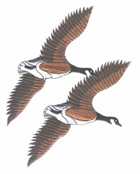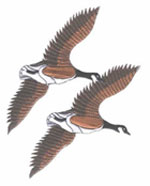South Africa Times LIVE
Times LIVE is the new digital home of Sunday Times and The Times
www.timeslive.co.za
By Peter Polack
Let us enlighten future generations about Cuito Cuanavale’s battle, writes Peter Polack
Mar 28, 2010 11:37 PM |
The Big Read: In a beautiful but sparsely populated part of Central Angola between 1987 and the spring of 1988, two of the largest superpowers in the world, the US and Russia, collided in a monstrous battle near a little- known trading town called Cuito Cuanavale, which had sprung up during the period of Portuguese colonisation.
They did not battle on their own territory but used the convenient Angolan civil war that began in 1975 to fulfil their narrow foreign policy ambitions.
They fought, not with their own armed forces but through the satellite nations of Cuba and South Africa, who came to surprise the world with their tactical and logistical abilities, using second-tier or self-designed weapons that proved themselves.
There were many surprises and similarities between the warring factions that came out of that intense period. Years after a substantive peace reigned, the Angolan people were left with a triple legacy; the scourges of mines, HIV/Aids and poverty.
The Cuban army proved themselves tactically superior to their Russian sponsors in the African bush war environment, and were able to arrange an air and sea movement of massive forces over 10000km, unlike anything in recent times except the Falkland’s War. This occurred despite the geographical obstacles of limited or non-existent forward international bases, causing long journeys in old aircraft with overworked pilots. The US-backed cancellation of landing permission in the Cape Verde Islands, Barbados and other places, but failed to stop the logistical juggernaut coming from behind the “mojito” curtain.
Once established in their positions in the soon to be destroyed Angolan town, the Cuban reinforcements resisted even the stiffest attacks by less-determined foes.
The South African Defence Force were equal to the task, using weapons developed over a long period of bush war experience and arms embargo that frequently out-performed Soviet equipment. They also operated some distance from home base, being 400km from the Namibian border, and a further 1000km to the South African border.
The SADF commanders had the edge in experience with familiar territory and independence in operation, which worked well until the set battle of Cuito Cuanavale ensued, when the outcome depended on will; political will, will to take huge casualties, will to stay in the face of flanking advances by emboldened Cuban troops.
The Cuban and South African forces were more similar than dissimilar, and their respective political ideologies and aims were all for nought when the first shot was fired and it became a soldier’s arena to the death.
Many of the accounts of this memorable battle are often masked by political or ideological slants, if not rank inaccuracies. Perhaps this is why an attempt should be made to reconstruct an objective record, with full available details and most importantly, to honour all the fallen.
Regard and respect should be for all casualties of war, including the first South African casualty of the battle of Cuito Cuanavale, teenager Lance Corporal Melvin Benecke of the SADF, who was killed on September 7 1987 by small arms fire during an ambush of the Cuban MIG fighter pilot Captain Lorenzo Morales Ramos, killed on October 28 that year. They will never return to family and friends. In the twilight of years, most will come to appreciate the unrelenting power of words and ideas over bombs or bullets. Estimates of Unita and Fapla losses in the Cuito clash run to the thousands but are incapable of accurate confirmation.
These soldiers were sufficiently dispensable that no one even recalled or published at least their names or unit numbers.
In a long-winded attempt to recover the public but unpublished list of Cuban dead from this war, assistance came from an unlikely source, in the speech of Jacob Zuma, then President of the ANC, on March 22 2008 in Angola. He said that the history of the Cuito Cuanavale battle should be divulged in books and in other media so that future generations can learn about this part of the history of their respective countries.
The list was released for research for my book Black Stalingrad.
One thing was certain. There was no apartheid on the battlefield, the medical evacuation, the hospital, the mortuary or final resting place in the porous African earth.
Peter Polack is criminal lawyer and amateur historian based in the Cayman Islands. His book ‘Black Stalingrad’ is about the battle of Cuito Cuanavale.
By Peter Polack March 2010
....................................................
Source havanaluanda



